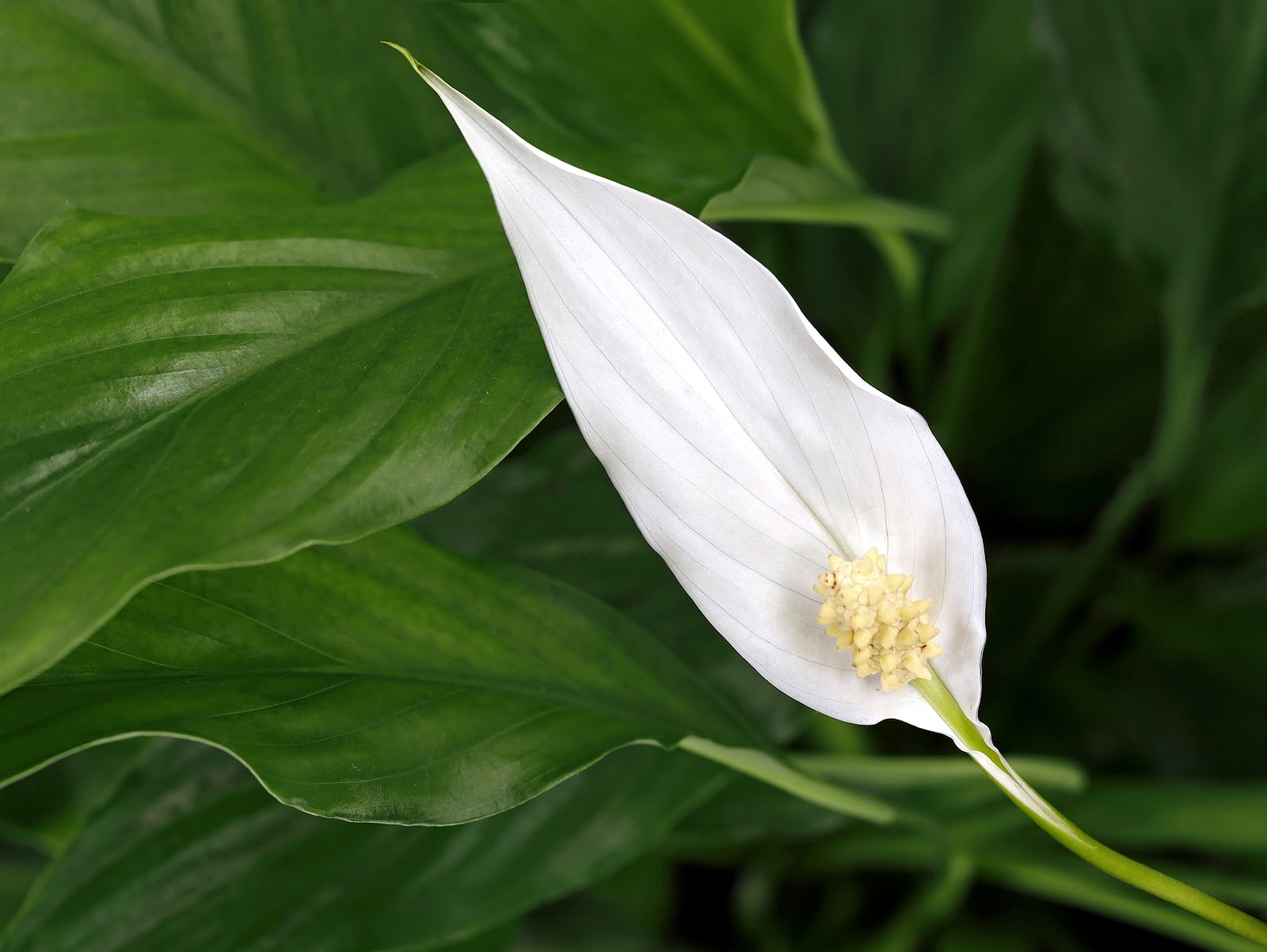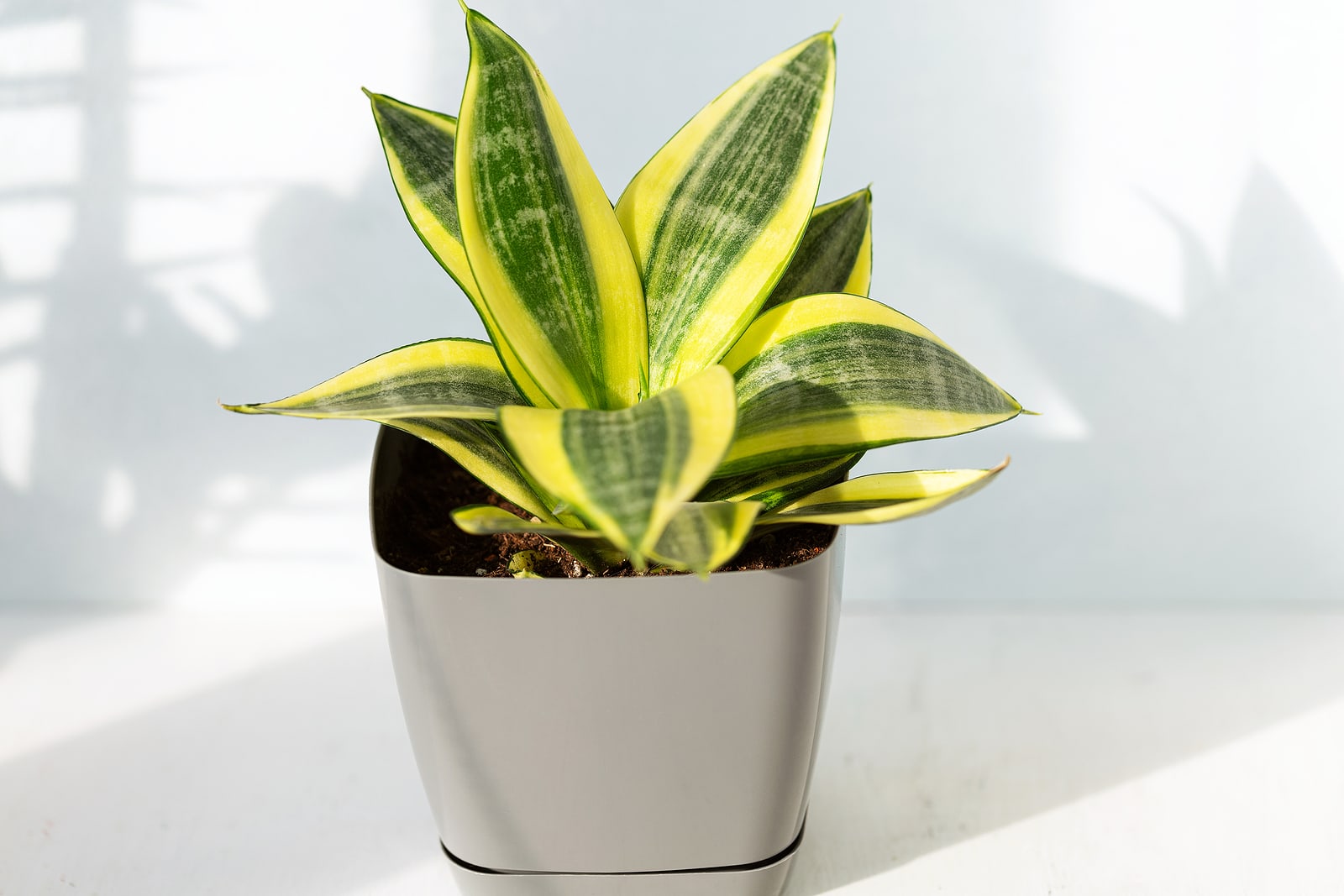
Green thumb. Most plant enthusiasts and gardeners are aware of the term and either self-identify as one who either has a green thumb or lacks one.
In other words, you are either good with plants, or not-so-good. If you feel you’re the latter, have faith. There are many houseplants that are both lovely and almost impossible to kill.
Peace Lily (Spathiphyllum clevelandii)
Not only is the peace lily hard to kill, it doesn’t demand the perfect spot with the perfect amount of sunlight. In fact, it is well-known to bloom even in relatively dark corners of a room.
What we like best about the plant, though, is that if you forget to water it, it will let you know by drooping. Give it a drink and it’ll perk right up again.
When you’re conscientious about watering, give it a huge amount of water – flood it – and then let the soil dry out. Other than that, and a dose of fertilizer once a year, the plant requires little care to thrive.
The one drawback to the plant, however, is that it’s toxic to pets, according to the ASPCA, so if you have a cat or dog that loves to munch on greenery, either keep the peace lily out of its reach or choose another plant.
Pothos (Epipremnum aureum)
If you need something to fill a hanging planter, do consider pothos, a gorgeous and hardy vine. A fast grower, it will send out long runners that you can cut, stick in a glass of water, and root new plants.
Pothos tolerates low light (even artificial light) and dry soil (as long as it’s not dry for weeks). Ideally, you’ll water when the soil is dry to within an inch of the surface and cut back on the frequency when the plant isn’t actively growing (such as in winter).
A basic houseplant fertilizer, or a 20-20-20 fertilizer applied once a month during the growing season will have it performing at its best but it won’t die if you don’t fertilize it. It just won’t grow as well.
Pothos is toxic to dogs and cats, causing “Oral irritation, intense burning and irritation of mouth, tongue and lips, excessive drooling, vomiting, difficulty swallowing,” according to the ASPCA.
Snake Plant (Sansevieria spp.)
Also known as the mother-in-law’s tongue, the snake plant (Sansevieria spp.) tolerates both shady and bright environments, and requires very little water.
In fact, the best way to kill the snake plant is by overwatering it. Eventually (if happy) it can reach to 4 feet in height.
Pot up your snake plant in a loose, well-draining mix or even a cactus mix combined with potting mix. For extra oxygen at the plant’s roots, which are prone to rotting if kept too moist, use a terra cotta planter. Remember to drain water in the saucer beneath the pot after watering.

ZZ Plant (Zamioculcas zamiifolia)
If you’re seeking a “set-it-and-forget-it” plant, the ZZ plant can’t be beat. It will thrive in low-light and dry soil conditions.
To help it retain moisture, the plant grows from rhizomes (which many mistake for bulbs) which not only store water but allow the grower to easily propagate the plant.
Keep in mind that all parts of the ZZ plant are toxic. “ If chewed or swallowed symptoms can cause immediate pain or a burning sensation and swelling of the lips, mouth, tongue and throat. Contact dermatitis may also occur in sensitive individuals,” according to the experts at Children’s Health Queensland Hospital and Health Service in Queensland, Australia.



